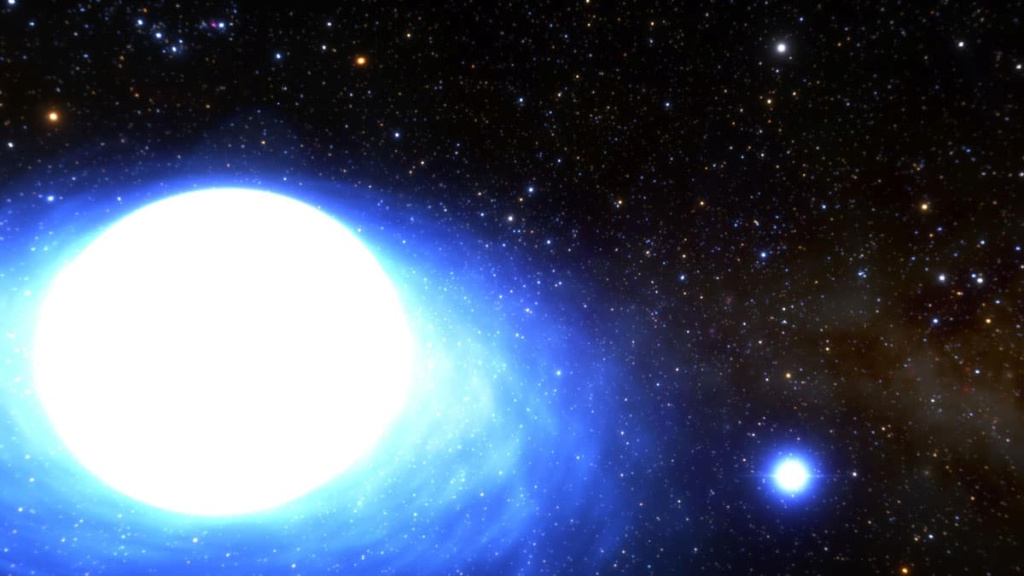A rare binary star bears witness to an aborted supernova

Artistic representation of the CPD-29 2176 binary. The smaller member of the pair is a neutron star that orbits the larger one perfectly circular.
noirlab/nsf/aura/j. da silva/spaceengine
Such star systems can be counted on the fingers of one hand: there would be less than ten in the Milky Way.
A wet firecracker: that's how you could describe the supernova that gave birth to the neutron star that is the smallest member of the CPD-29 2176 binary. Massive and bright in X-rays, this neutron star system he double star was identified by the Chandra space telescope and then scanned by ground-based instruments, including the 1.5-meter telescope at the Cerro Tololo Inter-American Observatory in Chile. The mass of data from all these devices was analyzed by Clarissa Pavao, a student at Embry-Riddle Aeronautical University in Prescott, Arizona. And there follows a surprising discovery.

A circular orbit
Indeed, the neutron star that orbits a hot, bright star larger than the Sun has an almost perfectly circular orbit. An oddity in the small world of X binaries. Indeed, this type of star is the remnant of a supernova: a tremendous explosion which marks the end of life of a massive star. The energy deployed by a supernova is sufficient to annihilate a companion that is too close or too low in mass and if the latter resists, it should at least be propelled further, so that the neutron star finds itself in an elliptical orbit like c This is the case in typical binary X systems.
To understand the configuration of CPD-29 2176, Clarissa Pavao ran computer models that helped reconstruct the history of this system. According to the calculations, the details of which are published in the journal Nature , it appears that when the progenitor star of the neutron star began to swell, it began to pour out a much of its mass to its companion and evolved into a low-mass helium giant. So that when it ended its life as a supernova, the explosion was much weaker than usual: a phenomenon called "supernova with an ultra-bare envelope". Theorized for a long time, the first proof of an event of this type was only obtained in 2018.
A united future
There would be only about ten binaries of this type in our galaxy, which makes its identification even more important. Especially since it happened somewhat by chance: initially astronomers were studying this region of the sky because they had detected a source of gamma rays coming from roughly the same place. In a few million years, the other star should also evolve into a supernova and form a new neutron star. It will now be two neutron stars that will begin a dance that will eventually lead them to merge to form a black hole. This is also an event that involves a colossal amount of energy generating short gamma-ray bursts and gravitational waves.. It is also during such fusions that the heaviest atomic nuclei are formed. It is also assumed that the gold, uranium or plutonium found on Earth come from a fusion of neutron stars that occurred 1000 light-years from the proto-solar nebula.
Source : websites

